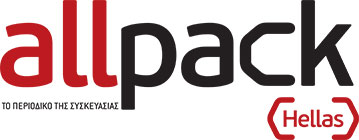Imports calm the situation a little / Will Hurricane Ida hamper supply? / Supply chains remain tense / Uncertainty in the automotive industry
PE: With some film grades, the increase in imports significantly improved the still very short supply situation. Apart from that, suppliers were mostly able to meet their contract agreements in August, helped by the summer break in southern Europe. Some converters even succeeded in obtaining additional quantities for their projects. Also, the feared repercussions of the defective naphtha pipeline did not materialise. The cautious decline in prices at the beginning of August became significantly stronger as the month progressed. For September, more imports are expected from the US, but it remains to be seen whether and how Hurricane “Ida” will mess up these plans and quotas. Supply from European production has improved slightly, but is still low. Converters are left with uncertainty and fundamental hope. With the pipe grades, the boom in the building sector further intensified the existing market bottleneck with HDPE pipe 80 and pipe 100. The overwhelming shortage meant that larger price increases were seldom up for negotiation. Once again, quantity has priority over price. Also, in the next few months, demand from the industry is expected to remain high because the rebuilding work in the flooded regions of Germany is likely to drive the demand for materials to new, previously unpredictable heights.
PP: The downswing in PP prices that began in July continued into August. In view of the very high levels already reached and converters’ increasing reluctance to order, producers could not even think about factoring in the EUR 58/t rise in C3 contract. The result was that notations for standard PP gave way for the most part. For compounds, however, accounts indexed to the monomer paid slightly more on average. Supply lengthened noticeably during southern Europe’s classic summer holiday month, and volumes not called up there could be redirected to central and northern Europe. At the same time, Asian imports and the restart of a key production line in the Netherlands helped further increase availability. Another factor was that the European automotive industry had to correct order volume substantially downward, due to the chaotic situation in its supply chain. All of this dampens producers’ sales expectations for September. Due to the increasingly cloudy outlook for business in a number of markets as the number of coronavirus cases continues to rise, as well as the extremely high price levels for PP, many converters have begun curbing orders. For this reason, notations should remain under pressure as Q3 draws to a close. The minimal downward correction of EUR 5/t in the September C3 contract will not play that much of a role, as over the past few months polymer prices have been continuously decoupled from the monomer anyway.
PVC: August was the 14th straight month with higher prices for S-PVC, with costs virtually doubling over that period. So far, nothing has changed as regards the causes of this long-time surge. As before, it is the serious shortage of materials that is driving prices from one record to the next. The price connection to the monomer base ended long ago, and the rise of EUR 53/t in the cost of C2 in August is merely a subsidiary aspect. Because imports are still desperately lacking in the required quantities, and because overall availability continues to be extremely limited, the soaring prices will continue despite the already astronomically high price level and the small drop of EUR 8/t in the cost of ethylene in September. In the slipstream of S-PVC, compound prices will also continue to increase.
Styrenics: In August 2021, the EUR 36/t increase in SM reference caused polystyrene and EPS prices to turn upwards again. At the beginning of the month, premiums were still largely in line with the monomer price increase, but they crumbled somewhat as the month progressed due to declining demand during the holiday season. Price increases were more pronounced for ABS, where cost increases for butadiene (up EUR 225/t) and ACN (up EUR 105/t) led to a higher increase in composite costs. The still-prevailing market tightness, however, made transferring the costs easy for processors. September, meanwhile, is likely to bring back declining prices. Once again, SM reference is leading the way, and in September, it went down by EUR 91/t. In the case of polystyrene, large parts of the cost reduction are likely to be passed on to customers; in the case of EPS, somewhat less than the entire cost reduction because of foreseeable bottlenecks. With regard to ABS, market players expect a rollover or a weak rollover, as recent cost increases for butadiene (up EUR 90/t) and likely also ACN, are slowing down the decline in composite costs – and the market is still characterised by significant supply bottlenecks.
PET: The situation on the European PET markets remained glum in August. The predominantly dull weather and continuing pandemic regulations tamed demand. Production output was correspondingly calm, and at the same time imports were increasingly being consigned to history. In this situation, the only real impetus was the rise in the cost of PX. Producers were able to at least factor in proportionate increases in costs. None of the market players expressed interest in getting excited about it; the general mood is likely to remain gloomy for the time being. Feedstock prices are still moving up. Because there is no other substantial impulse in sight, the small cost increase will presumably determine pricing. Increases must therefore be expected.
For more than 35 years, PIE has been an invaluable source of information for European plastics industry decision makers – a quick, yet in-depth look at the development of plastics markets and polymer prices. Available online 24/7 and as a printed newsletter twice a month. To read the entire report, go to www.pieweb.com and sign up for a 48-hour free trial!


































